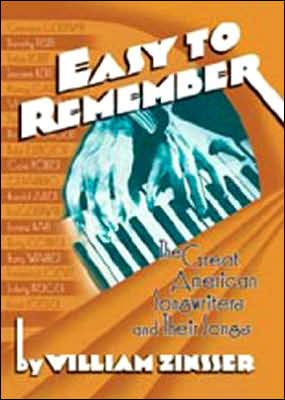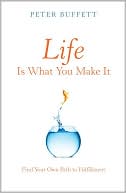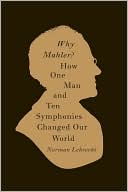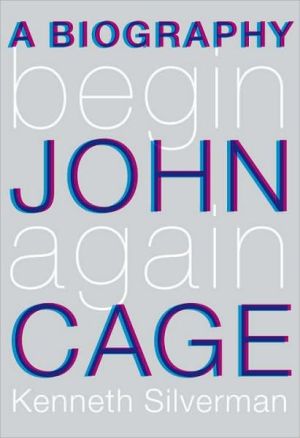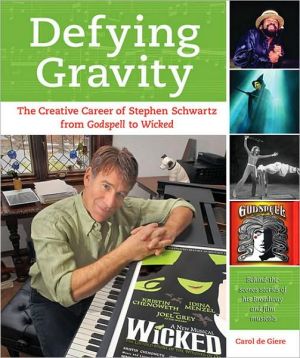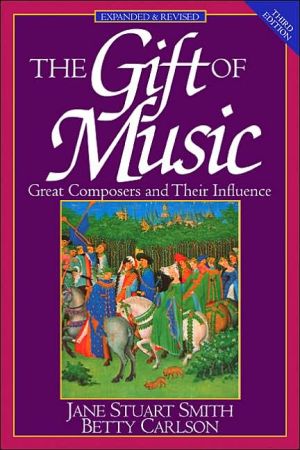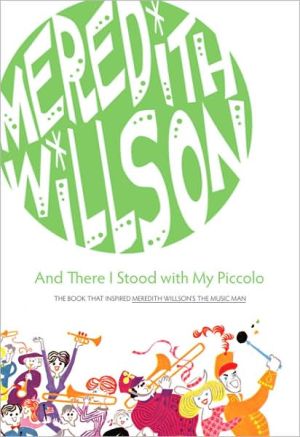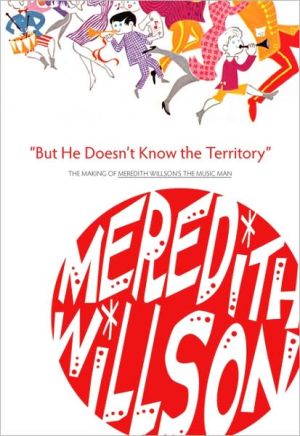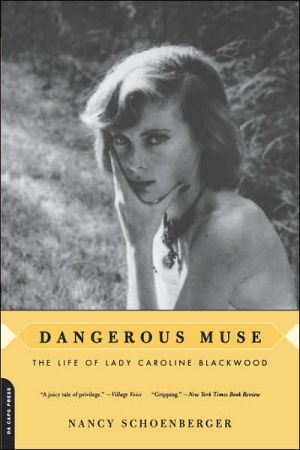Easy to Remember: The Great American Songwriters and Their Songs for Broadway Shows and Hollywood Musicals
In this warm and affectionate book, William Zinsser, author of the best-selling classic On Writing Well, describes his lifelong love affair with American popular song and the American musical theater. These are the words and melodies that are as familiar to us as the flag, so firmly ensconced in our mental topographies that they have become part of our standard literature, songs adopted and adapted by generations of performers, jazz singers, and musicians, deeply lodged in the memory of...
Search in google:
In this warm and affectionate book, William Zinsser, author of the best-selling classic On Writing Well, describes his lifelong love affair with American popular song and the American musical theater. These are the words and melodies that are as familiar to us as the flag, so firmly ensconced in our mental topographies that they have become part of our standard literature, songs adopted and adapted by generations of performers, jazz singers, and musicians, deeply lodged in the memory of everyone who has ever heard them.All the Things You Are, Star Dust, Over the Rainbow, Laura, Stormy Weather, Some Enchanted Evening, Someone to Watch Over Me, My Funny Valentine—the tunes are as "easy to remember" as breathing, but how were they written? What stars and what shows were they written for? Who were the men and women who wrote them? What makes the songs so good? Zinsser answers these questions. Starting with Show Boat in 1927, he provides a comprehensive overview, telling his story through the lives and careers of the great composers and lyricists: Jerome Kern, Oscar Hammerstein, George and Ira Gershwin, Rodgers & Hart, Irving Berlin, Harold Arlen, Cole Porter, Dorothy Fields, Hoagy Carmichael, Johnny Mercer, Harry Warren, Jule Styne, Frank Loesser, Stephen Sondheim, and many more.Zinsser writes from an intimate knowledge of the songs, as a scholar of the American musical theater, and as a pianist-performer himself. The result is a book unlike any other in its authority, insight, and detail. Written with the author's usual elegance and humor, supported by lyrics that instantly bring back the songs and their emotional associations, Easy to Remember is handsomely illustrated withrare photographs of the songwriters and with sheet music covers of the songs they wrote—one of America's gaudiest forms of poster art. With indices, song lists, and an extensive bibliography for show-tune aficionados, this is going to be the standard bedside reference for anyone who has ever found themselves seduced by this great American art form. Publishers Weekly Zinsser's enthusiasm for his subject emanates from the pages of this study of "the golden age of American popular song," framed by "the musical Show Boat in 1927... until the rise of rock in the mid-1960s." "My book doesn't claim to be definitive," writes Zinsser, theater and movie critic for The New York Herald Tribune during the '50s, professional piano player and author of 16 books, including On Writing Well and Mitchell & Ruff; "it's just one man's tour of his collection, as idiosyncratic as another man's collection of stamps or coins or butterflies." Zinsser uses the biographies of major songwriting talents as centerpieces for his in-depth portrayal of the days when "every home seemed to have a piano and at least one member of the family who could play it." He includes chapters on sheet music, songs from WWII and the direct impact that vocalists, Hollywood stars (Fred Astaire) and movies (The Wizard of Oz) had on popular composers. Moving from the "agreeable world" of Hoagy Carmichael to "hit machines" like Harry Warren, to the ambitious works of Gershwin, Zinsser demonstrates their centrality in the sphere of American music. He discusses not only harmony, intervals and syncopation, but he also includes the humble stories of talents who strove for, stumbled upon or seized prominence. Despite Zinsser's personal enthusiasm, the work never veers into sentimentality. "My book is a celebration, not a funeral, and one of the miracles I'm celebrating is how powerfully the songs have become lodged in the nation's collective memory," Zinsser explains. His effort is worthy of his ambition. B & w photographs and illustrations. (Jan.) Copyright 2000 Cahners Business Information.
\ \ \ \ Introduction\ \ \ I had the good luck to be born at the dawn of the golden age of American popular song, which began with the musical Show Boat in 1927 and lasted until the rise of rock in the mid-1960s. The thousands of songs written during that 40-year period—songs from Broadway shows, songs from Hollywood movies and songs that became hits on their own—were part of America's domestic landscape; everybody knew them. Today those songs are still in the air, still the standard literature and point of departure for jazz singers and musicians and cabaret artists. Frank Sinatra sang almost nothing else.\ The America of my boyhood was a self-entertaining nation. Every home seemed to have a piano and at least one member of the family who could play it, and every five-and-ten-cent store sold sheet music of the latest hits; many stores employed a pianist to demonstrate the songs. My parents would bring home the sheet music from Broadway shows, and those songs worked their way into my ear. (It was my further good luck to be born with a musical ear—a gift I would later put to use as a part-time pianist.) The words appealed to me as much as the music; I already knew I wanted to grow up to be a newspaperman. I began to keep track of who had written the songs and to recognize the different composers and lyricists by their distinctive voice.\ Harold Arlen and Ted Koehler were the first ones to hook me, with "Stormy Weather" (it was so emotional), and then Arthur Schwartz and Howard Dietz, with "Dancing in the Dark" (it was so suave), and then Cole Porter, with"You're the Top" (it was so clever), and then Irving Berlin, Jerome Kern, Dorothy Fields, and George Gershwin and Ira Gershwin with their brilliant scores for the Fred Astaire-Ginger Rogers movies. Those were my first giants, and I studied how they had constructed their songs, marveling that so much originality and wit could be achieved in so small a space. It dawned on me that I was growing up along with an evolving body of American lieder, a cultural form as characteristic of the 1930s as the screwball comedies of Hollywood and the radio hours of Fred Allen and Jack Benny.\ When I became a teenager I was deemed old enough to be exposed to Cole Porter's risqué lyrics, and my parents began taking me to Broadway shows. The pit orchestra was the most galvanizing of sounds, the musical theater the most wonderful of art forms. To hear the latest songs by Cole Porter and Irving Berlin and Rodgers & Hart (two new giants) actually delivered from a stage—belted out by some force of nature like Ethel Merman—was a thrill as potent as the one when I first saw the immaculate grass infield of the Polo Grounds. Musicals elbowed their way into my brain next to baseball as a life addiction.\ But I wasn't a theater snob. I was just as addicted to movies, especially movie musicals, especially bad ones, the kind that starred people like Don Ameche and Betty Grable and Carmen Miranda, because many of the best new songs were being written for those movies by Harry Warren, Harold Arlen, Johnny Mercer, Jimmy Van Heusen, Frank Loesser and other Hollywood contract composers and lyricists. I wanted to hear their latest work as much as I wanted to hear the latest Cole Porter.\ That quest whiled away many nights during World War II. I can still picture the army bases in North Africa and Italy where I saw Iceland, with Sonja Henie, in order to hear Warren's "There Will Never Be Another You," and saw And the Angels Sing and Belle of the Yukon to hear Van Heusen's "It Could Happen to You" and "Like Someone in Love," and saw Here Come the Waves and The Sky's the Limit to hear Arlen and Mercer's "Let's Take the Long Way Home" and "My Shining Hour." Songs were the sentimental glue of the war years—a whole subspecies of ballads of separation and longing and loss. Jule Styne and Frank Loesser and Sammy Cahn said it all with "I Don't Want to Walk Without You" and "I'll Walk Alone" and "Saturday Night Is the Loneliest Night of the Week."\ Home from the war, I began my real occupation, as a writer and editor with the New York Herald Tribune. One day in 1948 the paper's venerable drama editor was gently retired and younger blood was sought. The managing editor remembered that I was a musical theater fan, and I found myself in charge of the Sunday section devoted to the theater, movies, music, dance and art. Two seats on the aisle for every Broadway opening came with the job of drama editor and with my subsequent job as movie critic—a ten-year sojourn in the journalistic crannies of show business. Dozens of musicals arrived during that decade, including South Pacific, Guys and Dolls, The King and I, The Music Man, West Side Story and My Fair Lady. I saw them all and put their songs in my memory bank.\ Only one gap remained in the bank: all the songs from all the shows that had come to Broadway before the first original-cast album—Decca's Oklahoma!—in 1943. That black hole was filled by Goddard Lieberson of Columbia Records with his impeccably produced LPs reconstructing the scores of bygone musicals. I already knew the hit ballads from shows like the Gershwins' Oh, Kay! and Rodgers & Hart's The Boys From Syracuse and Pal Joey; they had long been standards. But what about all the other songs: the opening numbers and funny songs and situation songs? I consumed Lieberson's LPs and other archeological albums and retroactively filled in the blanks.\ \ \ * * *\ \ \ This book is the story of my lifelong romance with American popular song—the Broadway songs, the Hollywood songs, the individual hits by composers like Hoagy Carmichael, and all the great one-shots that came from out of nowhere: "These Foolish Things," "You Go to My Head," "I'll Never Smile Again." My book doesn't claim to be definitive; it's just one man's tour of his collection, as idiosyncratic as another man's collection of stamps or coins or butterflies. Nor am I unusual in the number of songs I know; jazz musicians have much of the literature somewhere in their fingertips, and many collectors—true fanatics—regard their knowledge as "encyclopedic."\ I've organized the book around the lives of the great songwriters, more or less chronologically, explaining where their talent came from, how their songs got written, and why I think the songs are good—matters of construction and craft. Because so many of the songs originated on Broadway, my book is also a partial history of the American musical theater, especially where new ground was broken: Show Boat, Of Thee I Sing, Porgy and Bess, Lady in the Dark, Pal Joey, Oklahoma!, Guys and Dolls, West Side Story, My Fair Lady. But I'm not a theater historian; my emphasis is on the songs and the songwriters.\ Nor am I a nostalgist, pining for a vanished age. "They don't write songs like that anymore," the mourners say. I think 40 years is a good run, and I'm grateful for what we got. My book is a celebration, not a funeral, and one of the miracles I'm celebrating is how powerfully the songs have become lodged in the nation's collective memory. I reel their power every time I play them and look at the faces in the room. I try to phrase the melody with the lyric in mind, as a jazz singer would—to play Hart more than Rodgers, Ira Gershwin more than George—because the songs first engage their listeners with what they say. People connect with the familiar story that the lyrics tell ("If they asked me I could write a book") or with the familiar curve of the melody that carries the words ("Somewhere, over the rainbow"). But the songs are even stronger in their associations. Like smells, they are an instant mechanism for recovering the past. "Pat and I first danced to that song," people tell me, or "That takes me back to Naples during the war," or "That was the big number at my high school prom."\ Often I know the people in the room and know of some of their pains and disappointments. If I don't, I can often guess. But something happens when they listen to an old Gershwin tune, or an old Cole Porter or Rodgers & Hart song. Their faces change; the aches and worries drop away. Watching them, I'm reminded that pianists who play this literature end up doing more than they signed up to do. The songs themselves take over the keyboard, providing solace and release and joy and the consolations of memory.\ \ \ Excerpted from EASY TO REMEMBER by William Zinsser. Copyright © 2000 by William K. Zinsser. Excerpted by permission. All rights reserved. No part of this excerpt may be reproduced or reprinted without permission in writing from the publisher. \ \ \ \
Introduction9Sigmund Romberg and the Europeans13Jerome Kern, Oscar Hammerstein and "Show Boat"17George and Ira Gershwin23Early Rodgers & Hart31Anatomy of the Popular Song371The Verse2The Chorus3The LyricVincent Youmans49DeSylva, Brown and Henderson55Harold Arlen (and Ted Koehler)59Arthur Schwartz and Howard Dietz67Andy Razaf and the African Connection71Sheet Music75Cole Porter85"Porgy and Bess"95Writing for Fred Astaire1031Irving Berlin2Dorothy Fields and Jerome Kern3George and Ira GershwinDuke Ellington (and Billy Strayhorn)117Hoagy Carmichael (and Mitchell Parish)123Late Rodgers & Hart131Harry Warren (and Al Dubin and Mack Gordon)137E. Y. Harburg and "The Wizard of Oz"145The Songs of World War II151Johnny Mercer157Made in Hollywood: "As Time Goes By" and "Laura"165Kurt Weill (and Ira Gershwin and Vernon Duke)171Rodgers & Hammerstein179Singers of the Song185Irving Berlin: The Theater Songs189Jule Styne (and Sammy Cahn)193Frank Loesser199Betty Comden and Adolph Green207Stephen Sondheim (and Leonard Bernstein)213Jimmy Van Heusen (and Johnny Burke and Sammy Cahn)219Alan Jay Lerner and Frederick Loewe229John Kander and Fred Ebb (and Jerry Bock and Sheldon Harnick)235Songs by Category244Acknowledgments, Sources and Notes251Index of People263Index of Musicals and Movies266Index of Song Titles268Permissions274
\ Publishers Weekly - Publisher's Weekly\ Zinsser's enthusiasm for his subject emanates from the pages of this study of "the golden age of American popular song," framed by "the musical Show Boat in 1927... until the rise of rock in the mid-1960s." "My book doesn't claim to be definitive," writes Zinsser, theater and movie critic for The New York Herald Tribune during the '50s, professional piano player and author of 16 books, including On Writing Well and Mitchell & Ruff; "it's just one man's tour of his collection, as idiosyncratic as another man's collection of stamps or coins or butterflies." Zinsser uses the biographies of major songwriting talents as centerpieces for his in-depth portrayal of the days when "every home seemed to have a piano and at least one member of the family who could play it." He includes chapters on sheet music, songs from WWII and the direct impact that vocalists, Hollywood stars (Fred Astaire) and movies (The Wizard of Oz) had on popular composers. Moving from the "agreeable world" of Hoagy Carmichael to "hit machines" like Harry Warren, to the ambitious works of Gershwin, Zinsser demonstrates their centrality in the sphere of American music. He discusses not only harmony, intervals and syncopation, but he also includes the humble stories of talents who strove for, stumbled upon or seized prominence. Despite Zinsser's personal enthusiasm, the work never veers into sentimentality. "My book is a celebration, not a funeral, and one of the miracles I'm celebrating is how powerfully the songs have become lodged in the nation's collective memory," Zinsser explains. His effort is worthy of his ambition. B & w photographs and illustrations. (Jan.) Copyright 2000 Cahners Business Information.\ \ \ \ \ Library JournalZinsser (On Writing Well, Mitchell & Ruff) profiles songwriters dating from the early years of the 20th century to the present, focusing on theater, film, and popular song composers and lyricists, as well as those singers associated with their work. In an endearing, personal style, which leaves the reader humming the tunes or wanting to hear the featured performers, he weaves short sketches of seminal figures such as Irving Berlin, Hoagy Carmichael, Duke Ellington, the Gershwins, Johnny Mercer, Cole Porter, and many others. The reproductions of sheet-music covers and photographs of the artists at different stages of their lives are especially valuable and fascinating, and the author's annotations on recommended readings are very helpful. However, the "Songs by Category," while interesting, would have been more useful with page number references. Mostly reliable and up-to-the-minute, including events occurring in the summer of 2000, Zinsser's work is recommended for larger music collections as a pleasurable diversion from routine biographical sources. Barry Zaslow, Miami Univ. Libs., Oxford, OH Copyright 2001 Cahners Business Information.\ \
